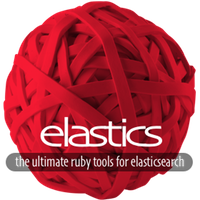
Elastics::ModelSyncer
Notice: Syncing is not needed if you use other external means to sync (like rivers or background jobs).
The Elastics::ModelSyncer model is included in Elastics::ModelIndexer which is included in Elastics::ActiveModel, so they all include the sync-related methods (see Class Methods and Instance Methods). However you may need to explicitly include the Elastics::ModelSyncer (see Including Elastics::ModelSyncer).
Syncing self
Each time you save or destroy a record belonging to a elastics model, you may want to sync the changes with the index. You can implement automatic synchronization by just declaring it. For example:
class Comment
include Elastics::ModelIndexer
elastics.sync self
endThat means that each time a Comment record gets saved or destroyed, Elastics will sync self (the Comment instance) with its related elasticsearch document, so the index will always contain the updated data from the DB(s).
Syncing relating models
Sometimes, you may need to sync also other records that are related with the changing record. That is needed when the other record embeds data from the changing record, as in our example with the Parent model (see Indexing Fields). In that case we mapped the indexed source to contain the children.count, so each time we add or remove a Child record, we need also to sync its :parent record (i.e. the self.parent). For example:
class Child
belongs_to :parent
include Elastics::ModelIndexer
elastics.sync self, :parent
endThat means that besides syncing self, Elastics will also sync the :parent parent record.
Propagation
Notice that Elastics calls sync on the synced records as well, so also their defined synced models will be synced as well. This feature automatically propagates the syncronization over models, still keeping its implementation very simple on a per-model basis.
Elastics tracks the propagation, so it avoids circular references. For example you can sync both the parent from the child and the child from the parent and it will work in either ways, because the propagation will not go backward.
Including Elastics::ModelSyncer
Sometimes you may have a model that doesn’t need to be indexed as a document, however part of its data is referred (and indexed) as part of another model. In that case you don’t need the full fledged Elastics::ModelIndexer which will add typical index related capabilities to your model (like index, type, store, remove, …). Indeed you need just to sync some other referring model(s). For example:
class NotIndexedModel
belongs_to :parent
include Elastics::ModelSyncer
# parts of the data of this model are referred in :parent and :other_model
elastics.sync :parent, :other_model
def other_model
# should return the record that needs to be synced
end
endIn this example, each time a NotIndexedModel record changes, the :parent and the :other_model records will be synced. Notice that a Elastics::ModelSyncer.sync cannot sync self: indeed you included that module instead of Elastics::ModelIndexer exactly because you don’t need to sync self. :-)
Class Methods
elastics.sync(*synced)
|
With this method you actually define the callback needed to keep the index in sync when the record change, and set the It accepts
When a record of this model changes, it is synced with its related elasticsearch-document, then the record returned by the |
elastics.synced
|
Attribute accessor for the Array of items to sync. You may need to set this Array only in the very special case that you want to sync the record manually. In that case you should not use the |
elastics.refresh_index
|
It refreshes the index by using |
Instance Methods
elastics.sync
|
It syncs the list of synced models, as set in the |
elastics.refresh_index
|
It refreshes the index by using |
